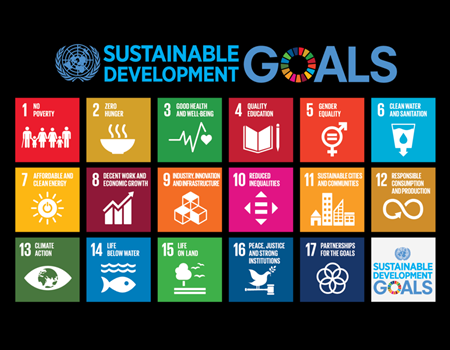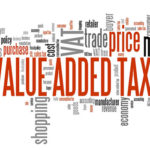The Sustainable Development Goals (SDGs) referred to as the worlds global goals agreed upon by different governments, organisations, and individuals in partnership. These sustainable development goals were developed to replace the Millennium Development Goals (MDGs) which expired in 2015.
With the desire and quest towards achieving global peace and development in varying forms and degrees, the United Nations designed this developmental framework to accommodate the get on plans referred to as ‘goals to meet the needs of the present generation and not compromising the ability of the future generation to meet their own needs.
Since the unveiling of this 17 global focus, in league with the signatories to the goals, it has been commended by partners of the goal as it appears more realistic, direct and clearly spelt out with targets for milestone reference and progress. Unlike the Millennium Development Goals (MDGs) which were shrouded together under 8 broad goals. This expansion and inclusion of more goals have created a pathway towards encouraging participation from the general public, providing room for engagement and opportunities especially for children, young adults, and non-governmental organizations in partnership. The Sustainable Development Goals can be said to be more perfectly designed for implementation than the Millennium Development Goals (MDGs), although there are arguments that the Sustainable Development Goals (SDGs) are way too broad and un-achievable by nations and states.
Prior to its adoption and against the above claim by some, there were several conferences, seminars, consultants and meetings with youths, non-governmental agencies and individuals to ensure that the weakness of the Millennium Development Goals (MDGs) was built upon in the new global goals. This has further aided partnership with children, youths, adults and other concerned partners like the states and Non-Governmental Organizations as each sustainable goal leaves responsibilities on everyone.
ALSO READ: Education: The high and low of quest for excellence
Following its adoption, it’s important to state that their operations and attainment at national, state and local levels require clear baselines, public discussion about implementation priorities, the design of goal-based strategies and effective follow-through mechanisms. This depends on timely and comprehensive data reportage to ignite policy during formulation and decision making.
For the goals to be achieved, it is important to make the goals local, taking it to the grass-root level, such that it receives the publicity as required as it is on the national and international space. By localizing the Sustainable Development Goals, it would go a measurable length of impact and reach for progress because the statistics, data, and figures of the goals lie in the rural areas. Towards actualization of this, it would be to the fulfilment of states and local governments when they engage in collaborative initiatives like the Public-Private Partnership (PPP) as a better option to fast-tracking development plans of their states and local rural communities. Thus, an enabling platform for them and their development partners should be created to share ideas on modality to fund and execute projects.
In addition, it is important for individuals, local and state communities to personalize and own the goals as a template for development. The goals were designed to facilitate growth and development in every aspect of human living and their communities. If the 17 Sustainable Development Goals are not owned, personalized, propagated and worked upon, actualizing it by the year 2030 would be a mirage.
Assessing the performance of Nigeria thus far in the 2018/2019 SDGs performance index, according to ND Link(Linking Partners for Niger Delta Development) Nigeria still ranks 159 out of the 162 countries that have adopted the global goals. To improve this ranking, the different states in Nigeria should be encouraged to adopt the goals for their state developmental plans and engaging their youths. Countries such as Denmark, Finland that ranks so high in the actualization of the SDGs leveraged on such engagement.
In Nigeria, the Presidency created an Office of the Special Assistant to the President on SDGs (Ossap-SDGs) to create a focal voice for actions and activities towards achieving the goals. At the state level, very few states which include Edo, Kano, Ekiti, Niger, Ondo, and Kaduna have given special focal attention to the SDGs by creating an office and presence of the goals in their respective states, Kaduna state leads in implementation. The Kaduna State Government literally adopted the SDGs as a development plan from (2016 – 2020) to aid achieving the goal and accelerating progress at the state level. They have demonstrated the political will and commitment to accelerate progress at the sub-national level on the SDGs implementation, they also sufficiently generate Data to track progress and frequently release reports to the public for monitoring and evaluation.
The significance and importance of the goals can’t be over-emphasized as they are goals that require a universal call for actionable plans to protect the planet, end poverty and to ensure the advancement of the observance of peace and prosperity before 2030 and beyond. The goals which were negotiated over a 2 year period before adoption include; No poverty, Zero hunger, Good health and well-being, quality education, gender equality, clean water and sanitation, affordable and clean energy, decent work and economic growth, industry, innovation & infrastructure, reduced inequalities, sustainable cities and communities, responsible consumption and production, climate action, life below water, life on land, peace , justice and strong institutions and partnership for the goals.
At different forums, training, workshop and stakeholders meetings towards implementation, monitoring, funding, and evaluation of the goals, it’s imperative that Ministries, Departments, Agencies of Government, field operators and partners contributing in different ways to realizing the goals pay attention to Data. Data reports and records on each goal and targets are highly required towards generating milestone and tracking progress. By effective reportage of the global goals by 2030, every figure, number, statistics and data counts. It’s one way we can track where we were at 2015, where we are in 2019 and where we would be by 2030.
Furthermore, in achieving the Sustainable Development Goals (SDGs) in Nigeria, it is important for government at all levels to seek partnership and give attention to youths and organizations committed to achieving the SDGs. Quite a number of people are involved in one project or the other and this goes a long way in contributing to the targets and milestones of the reality for the SDGs. It’s, therefore, necessary to bring into recognition every effort made by partners to the goals. Small-Medium and Large Enterprise owners, civil societies, non-governmental actors, educators, academia, the media employees of government, should be encouraged to do more. They should be orientated that their little efforts go a great length to achieving the SDGs.
Improved awareness about the 17 Goals should be designed for the younger generation at primary and secondary education level, either through inclusion in their civil education teaching the curriculum or engaging them in projects, academic debates and discussion in providing an additional solution to achieving the global goals. Also, accelerated efforts should be made in the translation of the 17 SDGs written in English to the different Nigeria local languages for its localisation.
Whichever road map that is being designed for the implementation and realization of the 17 global goals, the creativity, ideas and energy of the youths and Non-governmental organizations should be embraced to ensure the SDGs targets.
• Segun Adedoyin is a development enthusiast and writes from Ilorin, Kwara State via adedoyinsegun@gmail.com and @Segun_adedoyin on Twitter and Instagram | www.segunadedoyin.com.ng






